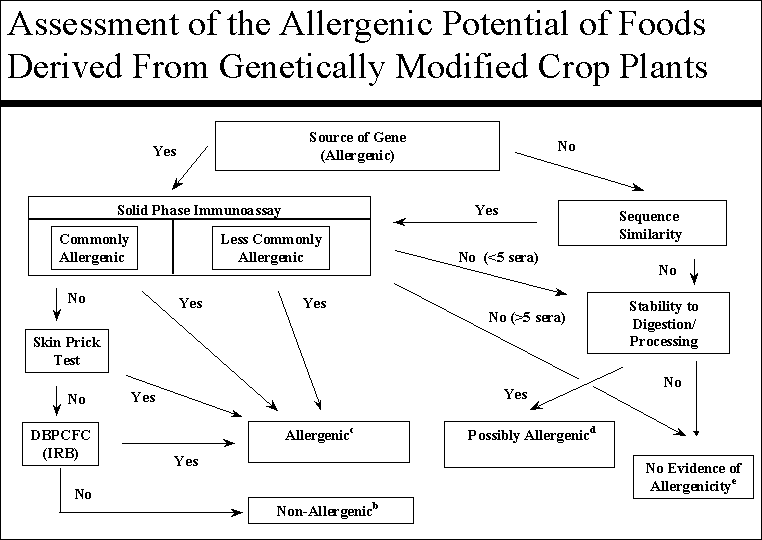
Footnotes to Figure
(a) The figure was adapted from decision-tree approach developed by International Food Biotechnology Council and Allergy and Immunology Institute of the International Life Sciences Institute (Metcalfe et al., 1996).
(b) The combination of tests involving allergic human subjects or blood serum from such subjects would provide a high level of confidence that no major allergens were transferred. The only remaining uncertainty would be the likelihood of a minor allergen affecting a small percentage of the population allergenic to the source material.
(c) Any positive results obtained in tests involving allergenic human subjects or blood serum from such subjects would provide a high level of confidence that the novel protein was a potential allergen. Foods containing such novel proteins would need to be labelled to protect allergic consumers.
(d) A novel protein with either no sequence similarity to known allergens or derived from a less commonly allergenic source with no evidence of binding to IgE from the blood serum of a few allergic individuals (<5), but that is stable to digestion and processing should be considered a possible allergen. Further evaluation would be necessary to address this uncertainty. The nature of the tests would be determined on a case-by-case basis.
(e) A novel protein with no sequence similarity to known allergens and that was not stable to digestion and processing would have no evidence of allergenicity. Similarly, a novel protein expressed by a gene obtained from a less commonly allergenic source and demonstrated to have no binding with IgE from the blood serum of a small number of allergic individuals (>5 but <14) provides no evidence of allergenicity. Stability testing may be included in these cases. However, the level of confidence based on only two decision criteria is modest. The Consultation suggested that other criteria should also be considered such as the level of expression of the novel protein.